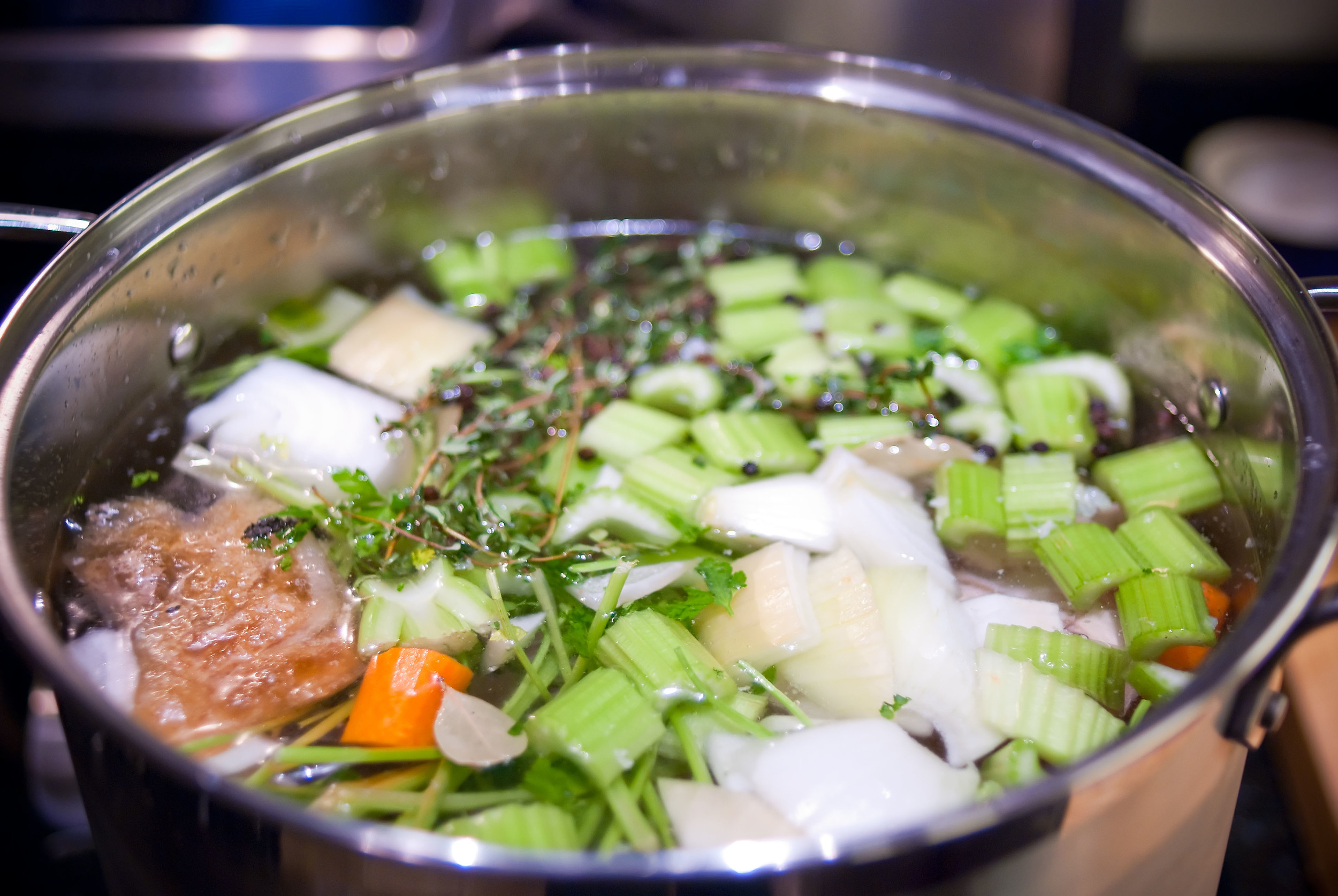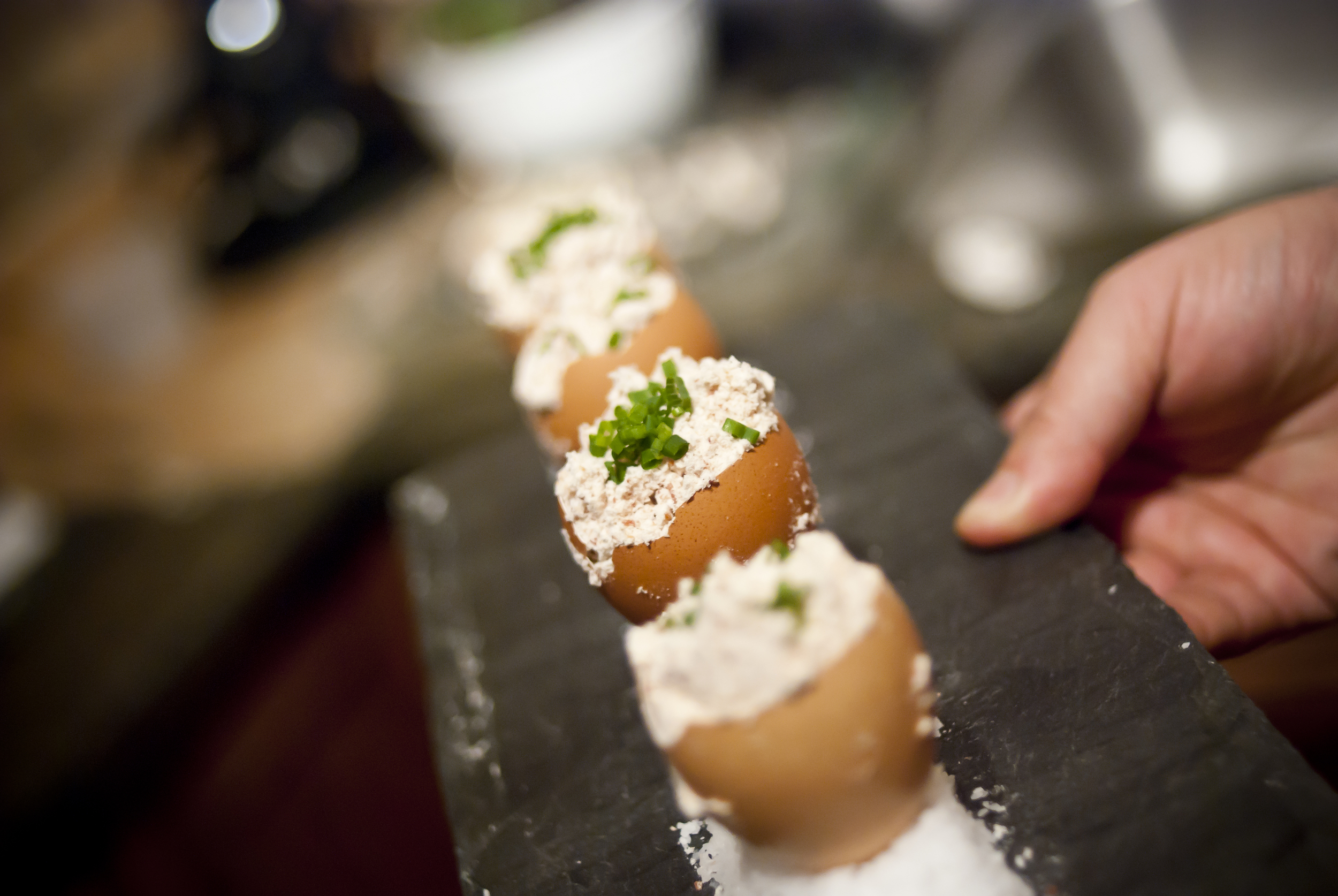So if you're like me, you aspire to to use as much of your food stuff as you possibly can. That's why you have a turkey carcass frozen in your freezer right now and why it's been there since November, or last November. (Hey don't judge.) We all have our reasons for not following through on the issue of stock.

Objection 1: Stock takes so much effort. Answer: Not really. It takes time, but as with most things in the kitchen, it takes just a little bit of kinetic energy to get the inertia to run itself. And that turkey carcass is chalk full of potential energy just waiting.
Objection 2: You can buy stock at the store on the cheap. Answer: Sure you can, if you want your soups and sauces to lack flavor and depth, go ahead, do it. Do it. But if you care about the food you put in your body and the flavors that you put on your tongue, you'll make your own. Plus, you have nearly free stock just sitting in your freezer.
Those are the only two objections that I can see and I just destroyed them both. That was easy, now on to the cooking.
This time on your trip to the grocery, market, whatever, pick up a head of celery, a couple onions, a bag of carrots, some thyme and parsley. Okay, that added, what, five to seven more bucks to your grocery bill? Yes, you could have bought two quarts of stock for that, but I'm about to multiply your monies, I promise.


Pull out your biggest pot, for cooking, and toss your thawed, or in my case, semi-thawed, turkey carcass in it. Take one of those onions, weigh it out, then grab an equal amount of celery stalks and carrots. Chop them all up roughly and about the same size. Throw them in the pot with the carcass. Grab about half the stems of the parsley and tear them from the bunch, take some thyme, pour some peppercorns that you have on hand and a couple bay leaves in the pot too. Now cover it all with water, put a lid on it and throw it on the fire. It may take some time here, but let it come up to a boil. During this time, you can catch up on your DVR recordings of Grey's, or The Kardashians (that's probably spelled wrong, but I'm not checking it). Once it comes up to a boil, turn it down to a low simmer (think slow bubbles). I left my lid off at this point and I didn't lose much liquid at all.

Now you can leave. And really you should. Take your dog for a walk, go out with friends. Busy yourself, cause this is when the magic happens and all you can do now is screw it up–that too would be pretty hard to do. Give it a good 3-4 hours. I think I let my stock go 5. Plus getting out of the house will let you come back in and you'll be able to really smell the goodness that is homemade stock. Your place will smell amazing and that dog odor will finally be gone.

Toward the end of the time, or any time during these hours, you can grab a spoon and scoop up the foam that's come up to the top. I'm not sure what it is, but it doesn't look appetizing and your end product will be clearer.
Now you're place smells amazing and you have this big pot of liquid gold, so get a big container, a strainer and if you have it, some cheese cloth (this helps grab some of the bits that could go through the strainer, but it's not necessary). Pour your liquid through the strainer into the big container and throw all the solids away. You've used them and they've served you well, so you can get rid of them. (The carrots are pretty tasty though.)
Now you have to cool your stock down. You can't stick it straight into the fridge, cause it'll lower the temperature dramatically and you risk bacteria getting into the rest of your food. And leaving it out on the counter is risky too. So a couple options. Bags filled with ice work and cool it down quickly. Or a cooler full of ice, that you put the big container in. Just think about cooling it down quickly with out risking infection to anything else. If any fat rises to the top, you can pull that right off. And I don't add any salt to my stock because I want to add that when it goes into something, so if I reduce it, I'm not concentrating the salt, just the liquid.

Divide it into smaller containers and freeze it (don't fill them too full!). I got 9 quarts out of my turkey carcass. It cost me roughly 5 bucks in extra ingredients, which would buy two quarts of stock at the grocery. So for the price of two quarts I got nine. See multiplication, I told you. Total cost per quart is about 55 cents. Seriously, it's worth it. You can pretty much do this with any animal bones you have sitting around. Chickens are obvious, but we make veal stock (demi-glace) in the restaurant with this same basic approach, just using veal bones instead of chicken, we just roasted them off first.













